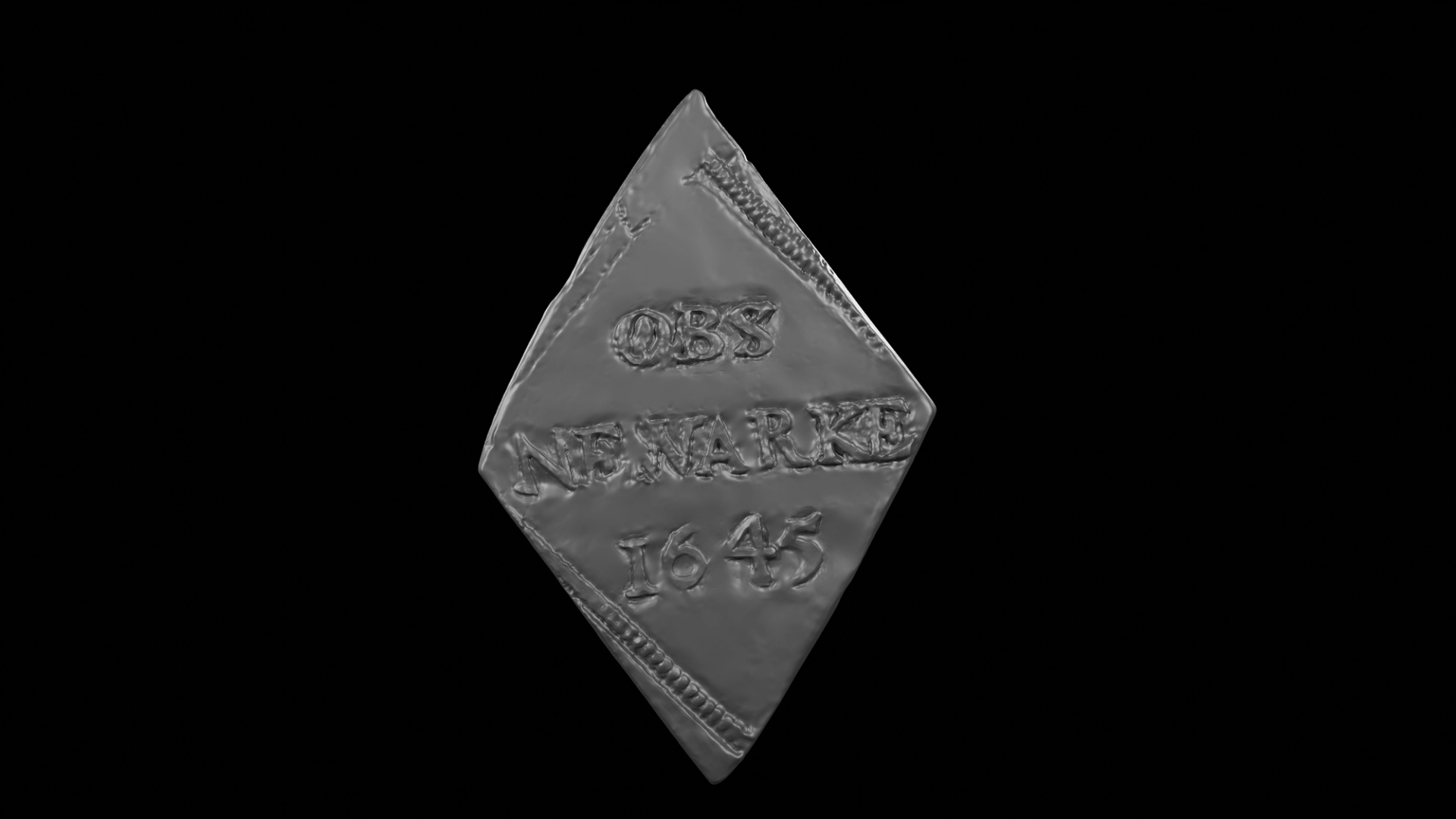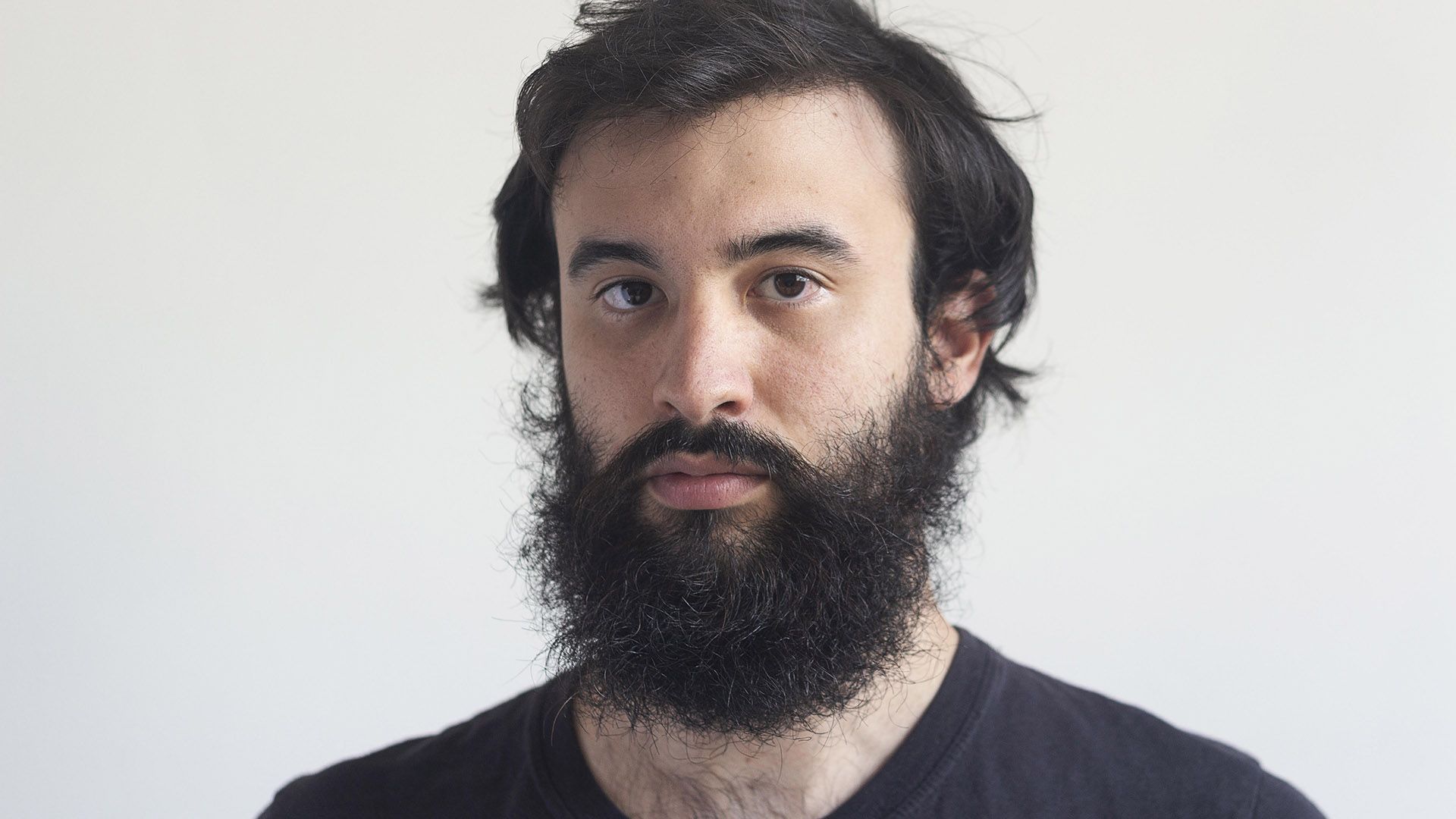An artist has stolen an historical coin from its display case in the British Museum in London and deposited it in a donation box in the museum’s lobby.
On 18 June, the Brazilian artist Ilê Sartuzi removed the 1645 silver coin minted in Newark, England from its display case in Room 68 during a demonstration by a volunteer guide and replaced it with a replica. He then carried the original downstairs, where he dropped it through a slot into a box for donated change. Sartuzi, who says he planned the short-lived heist for more than a year, caught the entire incident on film and showed the footage as part of his graduate MFA thesis exhibition at Goldsmiths, University of London.
In the seven-minute video, choppy, handheld camerawork, captured by three friends of the artist, shows Sartuzi being caught by a volunteer guide on 17 June, before successfully attempting the theft again the following day. He explains that he shaved his beard to avoid being recognised by museum security and managed to swap the coins with the aid of a “misdirection”, or momentary diversion. Sartuzi considers his act a work of conceptual art which he calls Sleight of Hand, a reference to the legerdemain he practised in order to replace the original coin with its replica.

3D render of the digital model of the coin that Sartuzi used to create the replica
Courtesy of the artist
The original coin, which is not registered in the museum’s database, is part of its handling collection, founded in January 2000 to offer visitors opportunities to touch historical objects under the supervision of volunteers. Sartuzi and his lawyer claim his actions therefore do not violate museum policies prohibiting the handling of objects or their removal from the premises, nor do they fall under the Theft Act of 1968.
A British Museum spokesperson said the police would be notified about Sartuzi’s actions but declined to say if the museum intended to press charges. “This is a disappointing and derivative act that abuses a volunteer-led service aimed at giving visitors the opportunity to handle real items and engage with history,” they said in a statement. “Services like this rely on a basic level of human decency and trust, and it would be a shame to have to review the provision of these services due to actions like this.” The spokesperson did not comment on the coin’s current whereabouts.
Sartuzi’s Sleight of Hand comes almost one year after a scandal over the theft of thousands of coins, jewellery and other objects from the museum's collection led to the resignation of its director, Hartwig Fischer.
The museum declined to say whether any additional security measures have been put in place since the scandal broke, nor confirm if it had been aware of Sartuzi’s actions prior to being contacted by The Art Newspaper. Although Sartuzi considers the scandal an “unfortunate coincidence”, he acknowledges that his work highlights “the problem of universal museums”. The British Museum “is a foundational part of the colonial, imperialist system”, he says, noting that the coin he stole was the only one of British origin on display. Research reveals that more than half of the museum’s collection remains uncatalogued.

Artist Ilê Sartuzi exhibited filmed footage of his British Museum heist as part of his MFA show at Goldsmiths, University of London
© Terremoto
Sartuzi, who intends to include the project in a solo exhibition at the Museum of Contemporary Art, University of São Paulo next year, has previously had shows at Pedro Cera gallery, Lisbon and SESC Pompéia, São Paulo.
Sleight of Hand, he explains, is primarily concerned with mythical trickster figures and the role of magic in “the social relation of money and currency”. Coins like the one he stole, made before and during the English Civil War (1642-51), were so widely counterfeited and “clipped”, or trimmed at their edges, that Parliament took control over monetary policy, founding the Bank of England in 1694. The “fetishistic character of money as a form”, Sartuzi says, “is closely related with the experience of the ‘momentary suspension of belief’ that is the basis of magic.”


